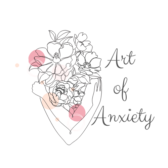One of the most powerful things I’ve found when it comes to my emotions (and the resulting anxiety), is the power of identifying and naming them. And this all starts with learning about primary emotions.
Primary emotions are fundamental, universal, and innate emotional states that are considered to be the building blocks of human emotional experiences. These emotions are thought to be cross-culturally recognizable and biologically wired in humans.
The primary emotions often serve as the foundation for a wide range of more complex emotions. Generally, there are considered to be 8 different primary emotions (which I’ll cover below). I’ll also cover the most common sensations that accompany them and share the more complex emotions.
What are the 8 Primary Emotions?
Our brain is biologically wired to experience 8 primary emotions. Each of these emotions serves a specific function that helps us in our lives.
Here are the 8 primary emotions:
- Anger
- Sadness
- Joy
- Fear
- Disgust
- Guilt/Shame
- Interest
- Surprise
There are common sensations that go with these emotions, but these can also be unique depending on the situation and the person. Recognizing these bodily cues is essential for effective emotional regulation.
Anger

Anger, a powerful and often intense emotion, signals a response to a perceived threat or injustice. While anger is the primary emotion, it can vary from mild irritation to rage. there are different degrees.
Typically, I try to avoid anger (which isn’t possible; it’s a primary human emotion). I don’t like the heat. But anger lets us know where our boundaries are. It tells us what matters to us.
Sensations Associated With Anger:
- Increased Heart Rate
- Muscle Tension
- Hot Sensation
- Shallow Breathing
- Flushed Face
- Adrenaline Rush
- Increased Energy
- Digestive Changes
Examples of Angry Emotions:
- Frustration
- Irritation
- Resentment
- Agitation
- Hostility
- Annoyance
- Rage
- Indignation
Sadness

Sadness, a universal emotion, arises in response to loss or disappointment. Allowing oneself to experience and process sadness is vital for emotional resilience.
Sadness, especially immense sadness like heartbreak, can be extremely overwhelming. My most recent heartbreak felt unstoppable, triggering my trauma response and sending me into a complete state. Because of this, sadness is my least favorite emotion because of how deeply it affects me. But sadness lets us know that we care. It lets us know we love something deeply.
Sensations Associated With Sadness:
- Heavy Heart
- Teary Eyes
- Withdrawal
- Deep Sighs
- Slumped Posture
- Feeling Drained
- Longing
- Emotional Exhaustion
Examples of Sad Emotions:
- Grief
- Melancholy
- Despair
- Sorrow
- Heartache
- Regret
- Loneliness
- Disappointment
Joy

Joy, the bright side of the emotional spectrum, emerges in response to positive experiences (such as doing something fun, like play). Cultivating joy contributes significantly to overall well-being.
Joy is one of those emotions that feel good in the body. It’s light where other emotions are heavy. But often, we repress joy because we’re afraid of the sadness that could follow if things don’t work out.
Sensations Associated With Joy:
- Lightness in the Chest
- Elation
- Smiling
- Increased Energy
- Warmth
- Laughter
- Positive Excitement
- Sense of Well-Being
Examples of Joyful Emotions:
Fear

Fear, an instinctual emotion, alerts us to potential danger. As humans, we have certain primal fears that trigger the classic fight-or-flight trauma response, activating our sympathetic nervous system.
Acknowledging fear allows for measured responses to challenging situations. And every time we face our fears, we create new neural pathways.
Sensations Associated With Fear:
- Increased Heart Rate
- Rapid Breathing
- Muscle Tension
- Cold Sweats
- Nausea or Butterflies in the Stomach
- Trembling or Shaking
- Dry Mouth
- Tunnel Vision or Dizziness
Examples of Fear:
- Anxiety
- Dread
- Insecurity
- Panic (and panic attacks)
- Unease
- Nervousness
- Terror
- Apprehension
Disgust

Disgust, a protective emotion, arises in response to offensive stimuli. Recognizing and responding to disgust helps maintain personal boundaries.
I’m really not a fan of disgust, but I don’t think anyone is. Typically, disgust sends me straight into sensory overload.
Sensations Associated With Disgust:
- Queasy Stomach
- Nausea
- Gagging Reflex
- Shuddering
- Repulsion
- Physical Recoil
- Loss of Appetite
- Feeling Unsettled
Examples of Disgust:
- Revulsion
- Contempt
- Disdain
- Repulsion
- Abhorrence
- Dislike
- Nausea
- Displeasure
Guilt/Shame

Guilt and shame, complex emotions often intertwined, arise from a sense of wrongdoing or moral transgression. Navigating guilt and shame involves acknowledging mistakes and learning from them. It encourages self-reflection, accountability, and the potential for personal growth and moral development.
Shame and guilt are really heavy emotions, and when it comes to feeling your feelings, they’re particularly tricky to move through (or at least that’s the case for me). I struggled with guilt throughout my teenage years (and I still struggle). And shame kept me from leaving the house for 3 months and still hits me deeply. This emotion often highlights our insecurities and our perception of ourselves.
Sensations Associated With Guilt/ Shame:
- Heavy Chest
- Averted Eyes
- Desire to Withdraw
- Feeling Exposed
- Hot Flashes
- Increased Heart Rate
- Restlessness
- Self-Blame
Examples of Shame:
- Embarrassment
- Humiliation
- Regret
- Self-Blame
- Inferiority
- Self-Consciousness
- Remorse
- Unworthiness
Interest

Interest, a positive and exploratory emotion, sparks curiosity and engagement. This is one of the more pleasant of our primary emotions, but it can be hindered by shame and guilt.
It’s important that we don’t let those emotions prevent us from exploring since cultivating a sense of interest contributes to lifelong learning and personal growth.
Sensations Associated With Interest:
- Heightened Attention
- Increased Pulse
- Enthusiastic Engagement
- Curiosity
- Sense of Exploration
- Eager Focus
- Positive Intrigue
- Openness to Experience
Examples of Interest:
- Curiosity
- Enthusiasm
- Engagement
- Intrigue
- Fascination
- Eagerness
- Absorption
- Openness
Surprise

Surprise, a transient emotion, occurs in response to unexpected events. It’s one of those emotions that people either love or hate. Embracing surprise allows for adaptability and a flexible response to the unpredictability of life.
I don’t mind being surprised unless someone tells me they have a surprise for me, but they don’t tell me what. Then my anxiety skyrockets, spiraling about what it could be, will I like it, what if it’s something bad? I hate it. However, because of my anxiety, I find I’m able to adapt to surprises pretty well.
Sensations Associated With Surprise:
- Widened Eyes
- Sharp Intake of Breath
- Heightened Awareness
- Raised Eyebrows
- Momentary Freeze
- Amazement
- Blinking Rapidly
- Sudden Alertness
Examples of Surprise:
- Astonishment
- Bewilderment
- Amazement
- Disbelief
- Shock
- Startle
- Awe
- Perplexity
What Are Secondary Emotions?
While we only have 8 primary emotions, there are far more secondary emotions. Put simply, these are basically just emotional reactions to the primary emotions. For example, sometimes you may get angry because you are feeling sad, or feel ashamed that you are fearful.
These don’t come from our biological wiring but rather from the world we grow up in.
In these situations, tracing the secondary emotion back to the primary emotion is essential in order to understand what’s going on.
The primary emotion may cause pain, but it is the secondary emotion that leads to suffering. This suffering keeps you from moving on from the emotion, and it happens when you get attached to your pain. It is a choice that only you can make.
The first step in preventing this is by naming your feelings. And if words don’t work for you, you can use colors to accompany emotional sensations.

Power of Identifying and Naming Emotions
By naming them, you differentiate them from you and place some distance between yourself and the feeling (it also shifts your state of mind). You are not anger, you are just feeling angry.
But naming your emotions isn’t always simple. Often, the sensations that arise from different emotions can feel similar in your body. For example, in my body, excitement and anxiety both cause a fluttery stomach and a tight chest, so it can be confusing as to what I’m feeling sometimes. This is where understanding the nervous system comes in handy.
It’s useful to be able to differentiate between emotions, but to do this you need to observe the sensations within your body and match them to an emotion. By investigating your feelings, you become more aware of them, and you learn more about yourself. You can also start to understand your emotions.
Emotions are an incredible teaching tool when it comes to learning about yourself.

Kathryn is the creator of Art of Anxiety. She was diagnosed with GAD and MDD at 16 and has been working every day to master the art of anxiety ever since. Her favorite things to do are aerial yoga and hanging out with her cats while reading a good book.




